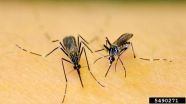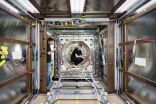(Press-News.org) Researchers at Case Western Reserve University combined finely crafted nanoparticles with one of nature's potent disrupters to prevent the spread of triple-negative breast cancer in mouse models.
The highly aggressive cancer subtype is difficult to manage and, currently, the FDA has no approved targeted treatments. But striking results from a new study, published in the journal Cancer Research make the researchers optimistic they have a potential game-changer for triple negative cancer and more.
"There are multiple targets within a cell," said William Schiemann, professor of oncology at the Case Western Reserve School of Medicine and the Case Comprehensive Cancer Center, and a leader of the research. "With this technology, we can target any gene or any location, for other cancers, more diseases--potentially even immunology-based diseases."
Regular injections of nanoparticles carrying siRNA silenced the gene that regulates expression of the protein β3 integrin. Expression of β3 integrin in the cell-development process called the endothelial-mesenchymal transition (EMT), is essential for the cancer to spread from its primary tumor.
Nearly 15 percent of breast cancers in the United States are triple negative, and the subtype is most prevalent among African-American women in their 20s and 30s
According to the National Cancer Institute, the five-year survival rate for women whose cancer is discovered early and contained to a primary tumor is 98 percent. But, the survival rate for those diagnosed with distant metastases plummets to less than 25 percent.
To try to tackle metastasis, Schiemann teamed with Zheng-Rong Lu, the M. Frank and Margaret Domiter Rudy Professor of Biomedical Engineering at Case Western Reserve, Jenny Parvani, now a postdoctoral investigator, PhD student Maneesh Gujrati and undergraduate student Margaret Mack.
Lu's lab has been developing lipid-based nanoparticles to deliver medicines to specific targets in the body for a decade. Lipids include fats and oils, but these organic molecules are also building blocks in cell structures and functions.
Schieman's lab investigates ways to manipulate the EMT process. He suggested they target the β3 integrin gene with siRNA, short for small interfering RNA or silencing RNA.
The nanoparticle, which Lu labeled ECO, navigates a number of roadblocks. It crosses the blood-brain barrier, which is key to effective therapy. Metastatic cells from this type of cancer often lodge in the brain.
ECO withstands degradation and remains cloaked from the body's immune system while circulating in the blood. ECO induces endosomes to wrap and transport it inside a cancer cell. The particle's makeup prevents entrapment in the endosomal membrane and digestion by enzyme-packed lysosomes.
The nanoparticles are coated with RGD peptide that draws them to the gene that controls expression of β3 integrin. When attached to the gene, TGF-β, the nanoparticle releases siRNA, which jams the machinery.
The study adds to growing evidence that a lack of β3 integrin stops production of migrating cancer cells.
In this study, five mice with a mouse version of triple-negative breast cancer were injected with particles every five days for 14 weeks. Compared to control mice, the treated mice's tumors shrunk significantly, but more importantly, the treatment significantly inhibited metastasis.
Five mice with human triple-negative breast cancer received the same treatment, which produced the same results.
"The results were really, really surprising," Lu said.
"I was shocked, actually," Schiemann said. "We can do most anything invitro in the lab, but to do this in the live body of a mouse is a huge hurdle to clear."
Four weeks after treatment was stopped, the treated mice remained tumor free while cancer continued to grow in untreated controls.
No significant difference in body weight across treatment groups and controls were found, indicating low toxicity of the treatments.
The researchers are further testing whether the delivery system is safe and seeking grants for dosing experiments and other steps toward clinical trials.
"We're also looking at different genes, different therapies and more delivery platforms," Lu said.
INFORMATION:
Pregnant women who exercise can significantly lower the risk of undergoing Caesarean sections and giving birth to large babies, a University of Alberta study has found.
Prenatal exercise has been suggested to be a means to prevent childhood obesity through a "normalization" in birth weight (ie. reducing the risk of having a large baby at birth). University of Alberta researchers conducted a meta-analysis to analyze 28 randomized control studies encompassing 5,322 women that looked at the influence of maternal exercise on baby outcomes.
"We found that women who exercised ...
In a study that compared three sites within the Dja Conservation Complex in Cameroon, Africa, investigators found that the presence of a conservation research project acts as a deterrent to chimpanzee and gorilla poachers, and community awareness and involvement in research lead to an increased value of apes and intact forests to local people, thus limiting hunting practices.
The results provide evidence that the mere existence of research programs exerts a positive impact on the conservation of wildlife in their natural habitats.
"It's important to recognize the effectiveness ...
Mass shootings at the hands of unhinged loners - such as those in Aurora, Colorado; Santa Barbara, California, and Newtown, Connecticut - perpetuate a commonly held belief that mental illness triggers violent crimes.
But a new study from the University of California, Berkeley, shows that hallucinations and delusions associated with psychiatric disorders seldom foreshadow acts of aggression.
In a painstaking review of 305 violent incidents in the United States, the researchers found that only 12 percent were preceded by psychosis. While numerous studies have found that ...
When ants go exploring in search of food they end up choosing collective routes that fit statistical distributions of probability. This has been demonstrated by a team of mathematicians after analysing the trails of a species of Argentine ant. Studies like this could be applied to coordinate the movement of micro-robots in cleaning contaminated areas for example.
Scientists have yet to discover the mechanisms explaining how flocks of birds, shoals of fish, lines of ants and other complex natural systems organise themselves so well when moving collectively.
To tackle ...
Scientists at a U.S. Army research center have modified an assay that tests whether or not a sample of mosquitoes harbors the virus responsible for the disease known as chikungunya (CHIKV), long a problem in the Old World tropics but recently established in the Americas. Their assay is described in an article in the Journal of Medical Entomology.
Health workers now have a quick way to detect the presence of the CHIKV virus within an hour, rather than waiting for results of laboratory tests that take days, or even weeks. It's done with a chemical dipstick, the same kind ...
KNOXVILLE--The reaction most people have when they hear the word bacteria is rarely a good one.
While it's true that food- and water-borne bacteria cause untold illnesses and even death around the world, a team of researchers from the University of Tennessee, Knoxville, and Oak Ridge National Laboratory has found a way to use bacteria to help prevent some of the very symptoms most people associate with them.
Terry Hazen, the Governor's Chair for Environmental Biotechnology, a joint UT-ORNL appointment, is working with a team of researchers who have developed a method ...
MAYWOOD, IL - Among the deadliest cancers is a rare malignancy called mesenchymal chondrosarcoma, which begins in cartilage around bones and typically strikes young adults.
Ten-year survival has been reported to be as low as 20 percent. But a Loyola University Medical Center study has found survival is not as dismal as prior reports. Among 205 cases examined, more than half (51 percent) of patients survived at least five years, and 43 percent survived at least 10 years, the study found.
The study by senior author Lukas Nystrom, MD, and colleagues was reported at the Mid-America ...
May 12, 2015 - It's portrayed in movies again and again - a character gets rejected by someone attractive and then falls willingly into the arms of someone perhaps less attractive. According to a new study, it's not so simple: Rejection by an attractive man actually led women to socially distance themselves from an unattractive man, even when he offered acceptance.
"We hadn't expected to see derogation of the unattractive male when women had been rejected by the attractive male," says Geoff MacDonald of the University of Toronto and lead author of the new study in Social ...
COLUMBIA, Mo. - Down syndrome, the most common chromosomal disorder in America, can be complicated by significant deterioration in movement, speech and functioning in some adolescents and young adults. Physicians previously attributed this regression to depression or early-onset Alzheimer's, and it has not responded to treatments. Now, a researcher at the University of Missouri has found that Catatonia, a treatable disorder, may cause regression in patients with Down syndrome. Individuals with regressive Down syndrome who were treated for Catatonia showed improvement, the ...
This news release is available in German.
Magnetic fields easily penetrate matter. Creating a space practically devoid of magnetic fields thus presents a great challenge. An international team of physicists has now developed a shielding that dampens low frequency magnetic fields more than a million-fold. Using this mechanism, they have created a space that boasts the weakest magnetic field of our solar system. The physicists now intend to carry out precision experiments there.
Magnetic fields exist everywhere in the universe. Here on the Earth, we are permanently ...


